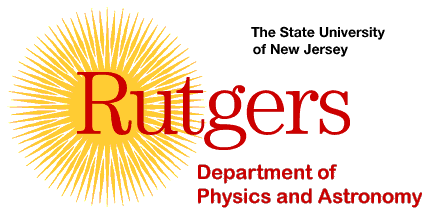

Nuclear Physics

|

Nuclear Physics |
|
Theoretical Nuclear Physics Research Activities
Nuclei range from interesting many-body systems (e.g. lead) to few-body systems (e.g. helium). Their properties may be explained either in a "classical" scenario, in terms of interacting neutrons and protons or, more fundamentally, in terms of their quark-gluon constituents. Experimental determination of these properties makes use of various probes, such as photon, electron, proton, antiproton, and heavy-ion beams. This includes a wide range of conditions such high density, high temperature, extreme neutron-rich or extreme proton-rich environments. Confrontation of evolving models and experimental data leads to a refined description of these systems and their interactions. A variety of topics is being studied. Double beta decay and its implications for the nature of the neutrino. Heavy ion collisions at high energies, where nuclear matter is created at very high temperatures and density, possibly resulting in new forms of matter such as quark-gluon plasma, condensate of pi-mesons, and Lee-Wick matter. Relativistic effects inside the nucleus. Superdeformed and hyperdeformed excited states of nuclei. Meson exchange currents in K-meson scattering from deuterons. Annihilation of nucleons and antinucleons. Spin-spin correlations in photoproduction. For details, look at the pages of the members of the group. |
Revised January 20, 2000